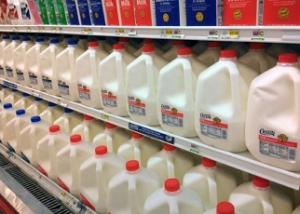Economic - Markets
Milk Price Similarities and Differences: 2014 vs 2022

We can make a comparison of the price pattern over the period of a year from November 2019 to the February 18, 2022. The movement of Class III futures seems as if block cheese price has been more volatile than it has been. In reality, block cheese price has been in a price range of $0.60 from a low of $1.46 1/2 on June 8, 2021, to a high of $2.06 1/2 on January 5, 2022. This can be compared to an extended period of time in the not too distant past when block cheese price remained in an extended sideways price range from January 1, 2015, to January 1, 2019. Price during that period of time ranged from a low of $1.27 1/4 on May 12, 2016, to a high of $1.94 1/4 on November 9, 2016, a range of $0.67 cents. The average Class III price over the four-year period was $15.36 with the Class III price average in 2021 of $17.08. The All-milk price for the four-year period was $16.82 with the All-milk price in 2021 averaging $18.69.
It was a long flat four years of milk price compared to what we experienced in 2014, what we are currently experiencing and what milk futures are indicating. So why the difference in prices and the reasons for the current optimism? First, the difference in Class III milk prices is the difference of dry whey prices. Dry whey price ranged from about $0.25 to $0.59 cents per pound over the period of January 1, 2015, to January 1, 2019. The period from November 2019 to February 18, 2022, dry whey price has ranged from $.27 1/2 cents to $0.86 3/4 cents. This is the main underlying reason for the difference in milk prices and the anticipation shown by futures prices. The other factors involved have the been heavy culling resulting in declining cow numbers. This has been due to skyrocketing prices of feed and supplies. In the four-year period of 2015 through 2018, cow numbers were increasing. Demand was strong but not as strong as it currently is.
Manufacturers are concerned whether milk supply will tighten further resulting in a shortage. There is no shortage at the present time as milk supply remains sufficient for demand. There have been some reports of insufficient loads to satisfy customers by some suppliers but that is being made up for by other suppliers or by purchasing from the spot market. The concern over tighter milk supplies has also prompted some plants that have quotas in place to not penalize patrons for production over their quotas at the present time. If fact, some plants are even encouraging patrons to increase milk production within the operation without expanding facilities. This is quite the change from what is had been for a number of years when plants were full and did not want any more milk.
How quickly milk production could rebound, or cow numbers begin to increase, is anyone’s guess. However, production and cow numbers may not rebound anytime soon due to replacements being tight along with a substantially higher cost of production. Farmers will need to feel confident higher milk prices will remain before making further substantial investments in adding cows and/or expanding facilities.
Robin Schmahl is a commodity broker with AgDairy, the dairy division of John Stewart & Associates Inc. (JSA). JSA is a full-service commodity brokerage firm based out of St. Joseph, MO. Robin’s office is located in Elkhart Lake, Wisconsin. Robin may be reached at 877-256-3253 or through the website www.agdairy.com.
The thoughts expressed and the basic data from which they are drawn are believed to be reliable but cannot be guaranteed. Any opinions expressed herein are subject to change without notice. Hypothetical or simulated performance results have certain inherent limitations. Simulated results do not represent actual trading. Simulated trading programs are subject to the benefit of hindsight. No representation is being made that any account will or is likely to achieve profits or losses similar to those shown. There is risk of loss in trading commodity futures and options on futures. It may not be suitable for everyone. This material has been prepared by an employee or agent of JSA and is in the nature of a solicitation. By accepting this communication, you acknowledge and agree that you are not, and will not rely solely on this communication for making trading decisions.





















